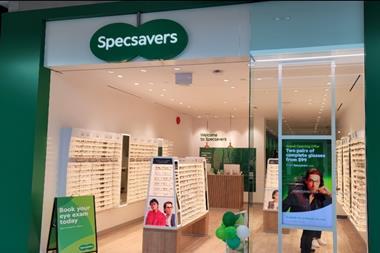Retail Week gave its edition of August 12 the strapline ‘Retail’s Darkest Week’. This may turn out to be not too much of an exaggeration, but because of more than riots.
Retail Week gave its edition of August 12 the strapline ‘Retail’s Darkest Week’. This may turn out to be not too much of an exaggeration, but because of more than riots. The same week saw extreme financial market volatility, and it is clear a deep recession is being followed by a long stagnation.
Until the beginning of 2010 this had been a pain-deferred downturn, with fiscal loosening and low food inflation offsetting the effects of weakening earnings. But since then rising prices and taxes have presented households with persistently declining net income, reaching about -6% in the last quarter.
Retail sales volumes actually grew in the second quarter, albeit by a tiny 0.2%. So households are reining back spending but at the same time the savings ratio has been falling.
Meanwhile retail space continues to grow at about 1% per annum and the migration to online adds another 1% per annum dilution to store like-for-likes. So volume like-for-likes are well into negative territory. What can be expected in the medium term? CPI inflation is likely to peak at about 5% later this year with already announced utility price hikes, but then fall sharply to about 2% by 2013.
Current price pressures are largely transitory, owing to weak sterling, commodity increases and VAT rises. Just as inflation has squeezed household incomes on the way up it can be expected to result in some growth on the way down again.
But the big uncertainty is whether this will feed through to consumption. Confidence continues to fall and consumers may feel that they should resume saving (or paying down debt) as a precaution against future shocks.
A further risk is a serious dislocation in the eurozone, which could lead to a tightening in the cost and availability of credit for households, severely curtailing retail spending. All of which means a very slow recovery in retail sales volumes, with risks definitely to the downside.
How should retailers respond to this outlook? First, the likely easing or even dip in commodity prices around the end of this year will provide a once-off opportunity for restoring margins or investing in value. This presents an unusual challenge for buyers: from resisting supplier price increases to achieving nominal price decreases. The balance of power will briefly swing in favour of suppliers, who will squirrel away margin unless retailers display a keen insight into their cost structures.
Second, as inflation falls but confidence remains shaky, retailers will have to offer compelling reasons to reignite spending. Success in 2010/11 has been about creating trade-down options – value ranges, own brands, meal deals – which have allowed inflation-hit customers to economise. 2012/13 will be about offering attractive value, innovation and trade-up options that encourage cautious consumers to resume spending.
Third, even if there are some glimmers of spending, it won’t be in the same areas. Upscale shoppers who might have sustained some retailers are feeling a lot less wealthy than they were two weeks ago. Growth niches, regions and channels will need precision targeting.
- Michael Jary, Partner, OC&C Strategy Consultants


























No comments yet